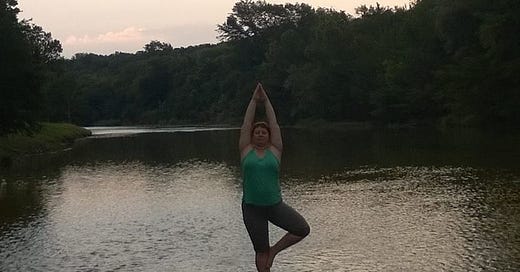I’ve spent a lot of time in the Texas hill country over the past couple of decades. It’s where everyone from the big cities can escape for a little fresh air, fireflies, silence, abundant wildflowers, and clear, cool streams to dip your toes in. I’ve loved every long weekend we’ve spent there, despite the occasional scorpion hanging out in a cabin bathroom.
There are signs everywhere about flash floods. They are largely ignored on those sunny spring days when you’re hanging out by the river, but they’re ominous. And you can see high up in the trees scraps of whenever the last flash flood happened. Fabric, parts of canoes, 15-20 feet up in the air, a reminder of what is possible.
That’s the thing that hurts about this disaster: it was always possible. Those of us who live with extreme weather on a regular basis understand that we’re one bad day away from losing everything, but can’t dwell on that possibility or we’ll be paralyzed. The local officials and the Kerrville regulars knew that a flash flood was likely, but figured it would be like all the other flash floods that ruin an afternoon.
You just don’t know it’s going to happen to you until it’s happening.
I believe everyone when they say they couldn’t have known, that everyone did their best. Maybe there will be improvements in their local emergency system after this, but it won’t necessarily help the next community that goes through it. I guess I’m just not interested in pointing fingers and second-guessing. It can’t change the fact that this happened and that this little town and all of its visitors that survived this will be traumatized for years to come.
The camp kids who survived have shared their experiences in matter-of-fact tones about water rising to their top bunks, cabin walls disintegrating. I hope they will be able to process these memories with support of mental health professionals. They will need help.
The pictures and stories are triggering for me, but I can’t look away. I expect I will have some flood dreams this week. I still have those regularly nearly eight years after Harvey.
There’s a lot of people helplessly reading news, perhaps donating some money, but wondering what they can really DO about it. Well, I have one solution: prepare yourself.
We learned so much the hard way after Harvey. We realized we hadn’t been prepared at all for a worst-case scenario. Every hurricane season, we’re told to prepare an emergency kit, but prior to Harvey to me that meant making sure we had some candles and nonperishable food and gas in the car’s tank. That was all useless to us when three feet of water rushed into our home around 5 a.m. and our cars were completely submerged in water.
I have a long list of things I’d love for everyone to do to prepare for an emergency, but I’m going to keep this simple. These are my non-negotiables; preparations I will have in place no matter where I live or how I safe I think I am.
Emergency bag
It doesn’t matter where you live, you should find an old unused backpack right now and put together a bag that you can grab in an emergency. Here’s what’s in mine:
- Three days of comfortable clothes, including socks and underwear
- Case to protect phone from water and other plastic bags to protect items from water
- Plastic poncho
- OTC medications (Advil, cold medicine)
- Toothbrush/toothpaste
- Travel-size cleansers
- List of important phone numbers (in case your phone gets wet/dies)
- Small first-aid kit
Have one for every member of your family. Have one for your pets.
Life vests for everyone in your family
Before you head out into the unknown of flood waters, put on a life vest. It’ll make you more visible, it might help you stay alive if you get swept into a current.
Protect your papers
There are many waterproof and fireproof containers out there and they’re not expensive. Keep your important papers in there, not tucked away in a drawer somewhere.
Get your tetanus shot every 10 years
You have no idea what you’re going to be stepping on in flood water or a collapsed building.
Microchip your pets
So many animals get separated from their humans during emergencies. The only way to ensure that they get back to you is to get them microchipped and make sure the information on the chip is correct.
That’s it. Those are the most important actions you can take right now to survive the worst. I have a million tips for how to recover and rebuild, but those aren’t particularly useful in this situation. I just want you to be more prepared than I was in 2017.





Thank you so much for these thoughts and reminder of survival essentials. Now in the time to plan.
I was in San Angelo last weekend and have relatives in Ballinger and Wimberley. It is beautiful, rugged country.
Like you, I am grieving following the updates. Heart wrenching times for so many.